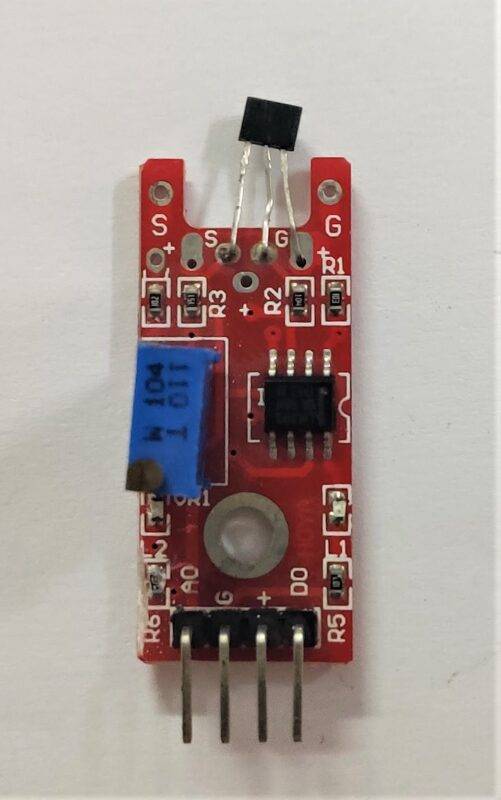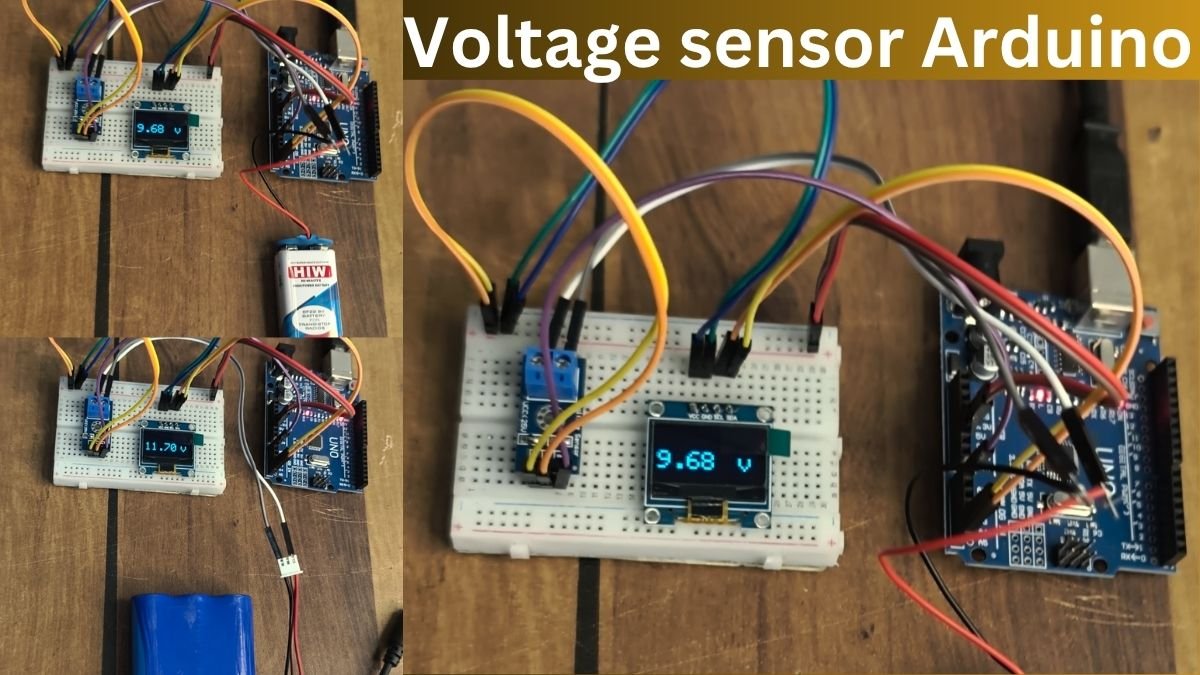Magnet sensor is mostly used in projects which require the use of some kind of counter or locking mechanism.
- To clear all confusion, This sensor is also known as a Hall effect sensor. It is easily available in the local and online market at a very cheap price.
- The sensor gives both output Analog and Digital. But I prefer digital, as analog values can change if the magnet is not lined up correctly to the sensor.
- Apart from this, the sensor has the advantage of replacing the component if one gets damaged. The main component, which we’ll discuss in the Hall effect construction section, can be changed.
- You can view projects based on the hall effect sensor and its projects with microcontrollers mainly used. Also, here is the link to buy the sensor and the replacing part.

Table of Contents
Construction of hall effect sensor

- Above is the schematic which is drawn from a hall effect sensor that I have lying around at my place. This hall effect sensor does not claim 100% accuracy as the schematic can be different for some people.
- The main component of the hall sensor is an AH49E Hall effect device, which is similar to a transistor. More information about this can be gathered through datasheet.
- Apart from all this, the only drawback of this sensor is that it can only detect the south pole of the magnet. And for SMD(SOT-23-3) package it is North Pole.
- The hall effect sensor is also built-in in combination with the LM393 IC, which is a dual voltage comparator. So we can say that this hall sensor is similar to many other sensors which are also built in accordance with L393 IC.
- Like another sensor, this hall effect sensor also has a potentiometer and an onboard status led, which are used to trim the values send to the microcontroller and to reflect the status of the detection.

Working of hall effect sensor
AH49E:
- This is the small Transistor device which is the main component of the whole sensor, I’ll explain this in brief in the next few points & for detail, you can view its datasheet attached above.
- The working voltage of the transistor is 3V – 6.5V overvoltage or Undervoltage may either lead to frying your IC or a malfunction of the program. Also, the working temp is of quite a large range so there is no issue with it.
- It comes in two packages either T)-92 or SOT23 (SMD version), both are easy to use and their hall sensor circuit can be built easily for custom usage. if yu are making any project like magnet detector or cunter then you can choose this sensor.

Working of hall sensor
- The working of this hall sensor is similar to another sensor that is included in the basic electronic series and built out of the LM393 IC.
- AH49E hall effect sensor device only detects the south pole of the magnet and sends out an analog signal as per the datasheet through its output pin. It is then combined with a 150 Ω resistor as in the schematic. To give a suitable logic level signal to the microcontroller, in combination with a pull-up potentiometer.
- The first comparator of the lm393 IC sends out the digital signal through the OUT1 pin to the microcontroller. The 2nd comparator is connected to the status led to reflect the status of detection by the sensor.
- You can replace the AH49E if the one preinstalled is worn out, also the ink to the spare part is provided above. After knowing the working of this sensor you can also learn how to interface magnet sensor with Arduino.

Advantages & Disadvantages of hall effect sensor
Advantages of hall effect sensor:
- The main advantage of this hall sensor is the size, as it is so small it can be used in small places or can be easily built on a custom PCB for more compact usage.
- Secondly, the main part of the sensor is a transistor type 3 pin component which gives a high signal whenever a magnet approaches it, so it can be taken into use unilaterally.
- The Analog signal might not be that useful but in some cases, it can be useful like in the case of magnetic encoders in motors and rotary actuators to calculate RPM.
The disadvantage of the Hall effect sensor:
- The main disadvantage is that you have to identify the pole of the magnet to which it responds, else it will not show any deflection on the signal or OUT pin.
- The magnet should be strong, else you may see incorrect or malfunction in readings as the hall sensor may or may not respond to the low magnetic field.
- The sensor cannot be fixed in a place where high electric field is present, else it will affect the sensitivity of the IC. It will be much better if the sensor is placed separated from all the electronics part, or you have to correct the zero error.
Applications of hall effect sensor
There are many applications of this hall sensor also due to its simple connectivity it is used by beginners to have a firm hand forward in this field:
- Rotatory motor Encoders
- Count meter
- Limit switch in 3d printers
- Magnetic/Ferrous metal detector,etc.

Hall Effect Sensor FAQ
Q. What is the operating voltage level of the Hall Effect Sensor?
It depends on the model of the sensor you are using, some have 2.5V-5.5V, and others may have higher. So either checks the datasheet of the hall effect sensor of just the name of the model to get the correct voltage level, or you may fry up your system.
Q. What is the magnetic field sensitivity of the Hall Effect Sensor?
Particularly it depends upon the type of magnet or hall effect sensor you use for AH49E is it from ±650 to ±1000 Gauss.
Q. Does natural Loadstone or Black-colored magnet work well with the Hall effect Sensor?
From my personal experience these may change as per time but for good result try to use neodymium magnets






